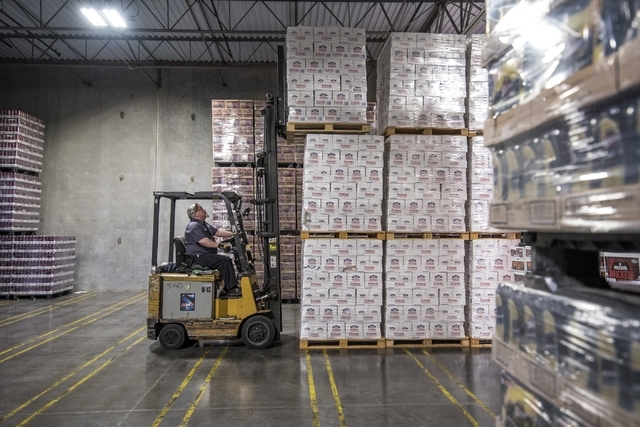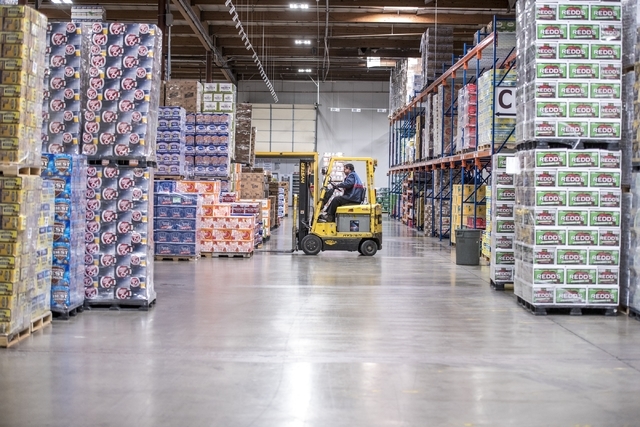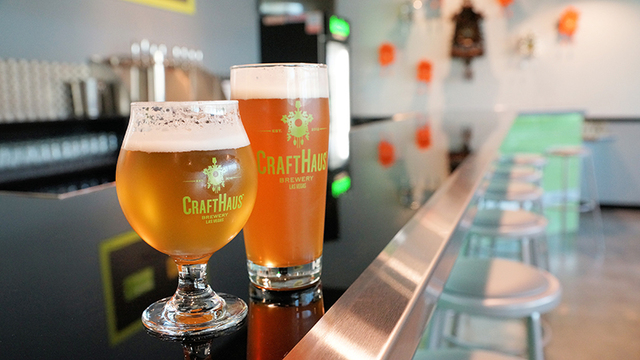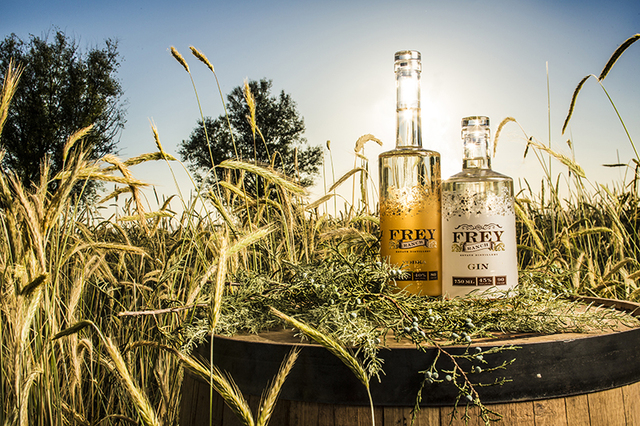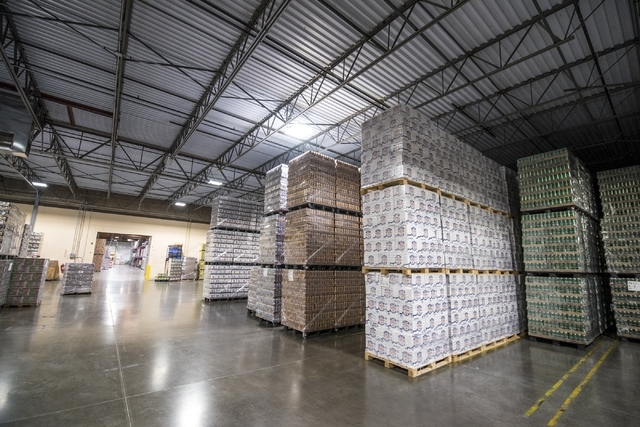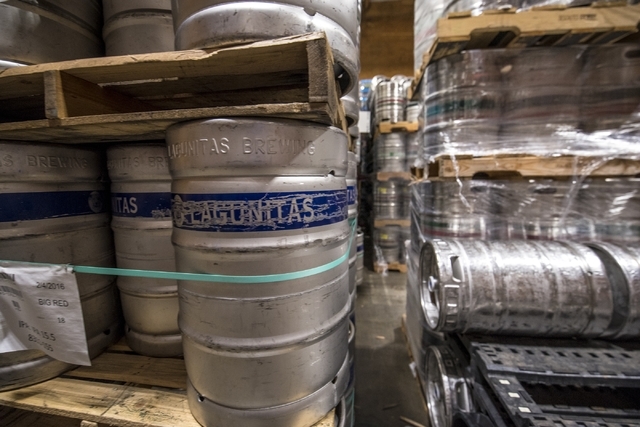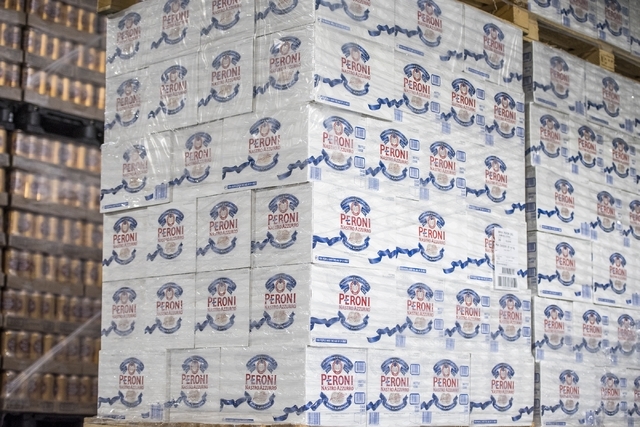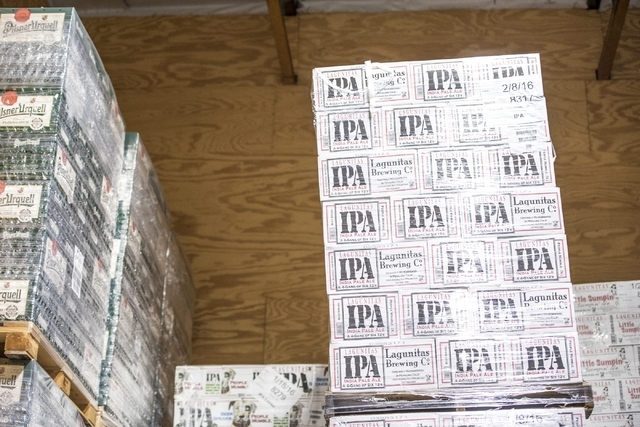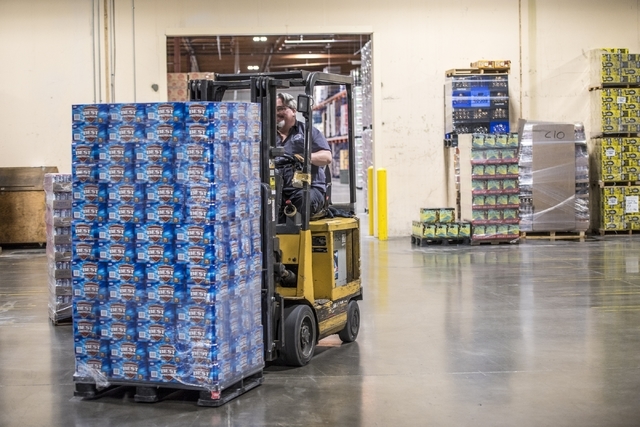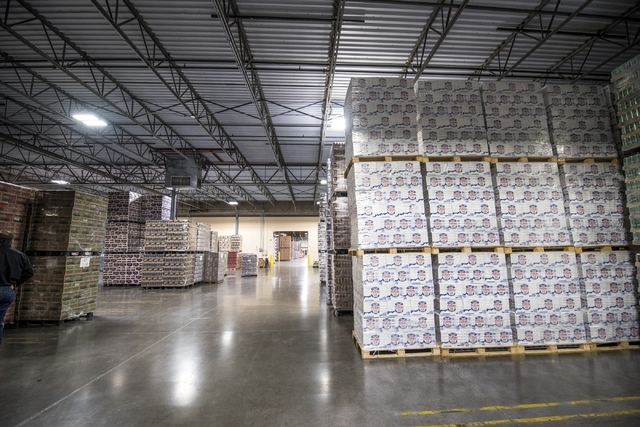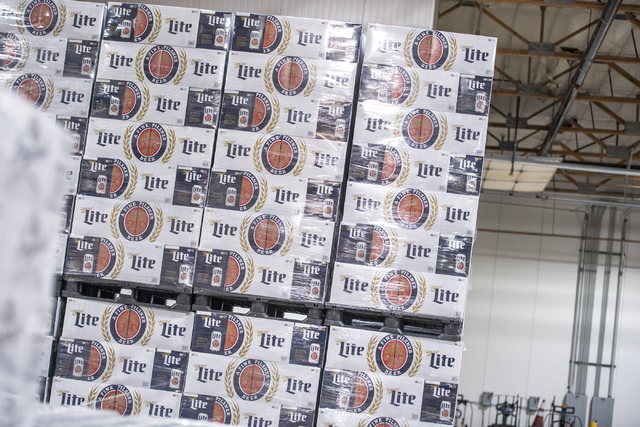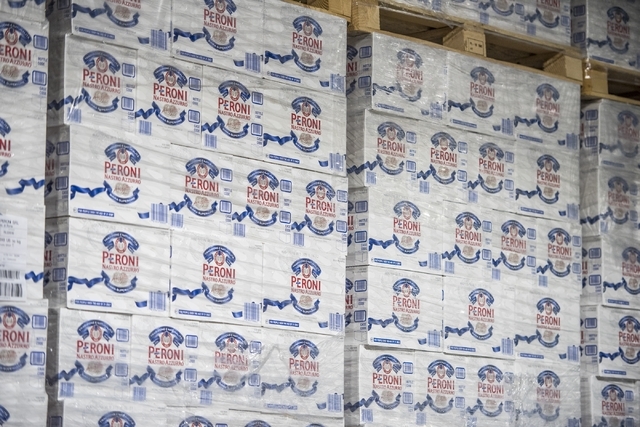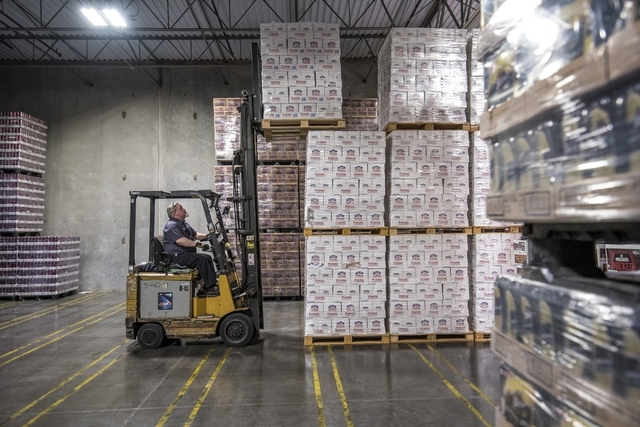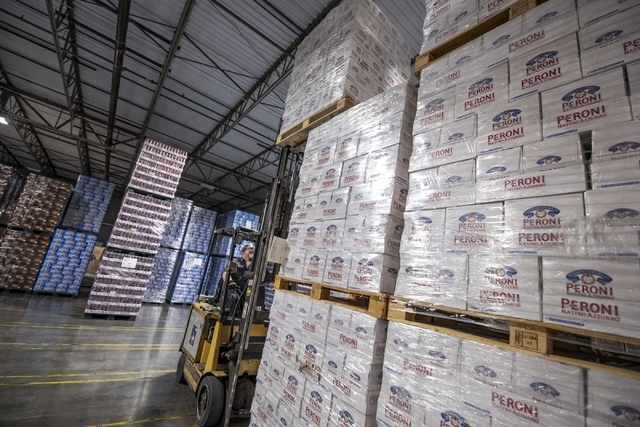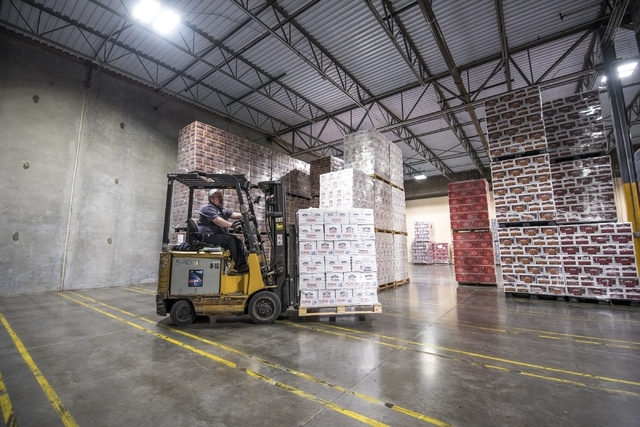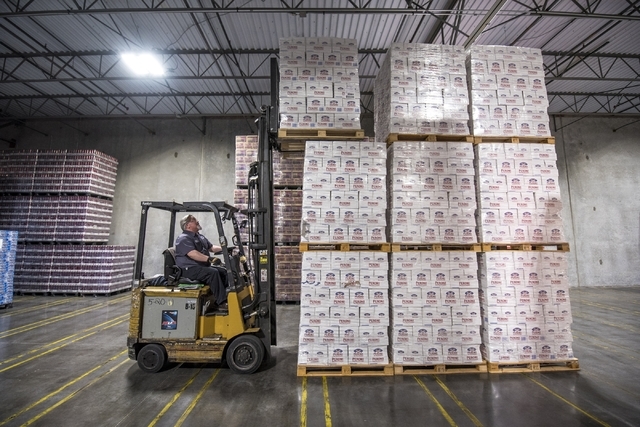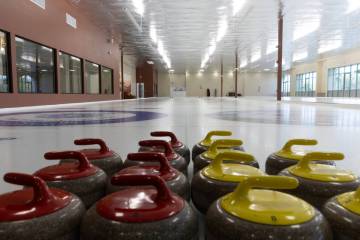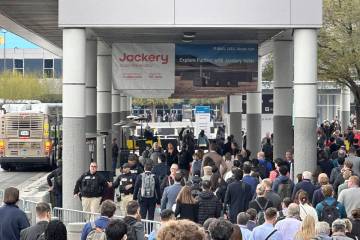Alcohol distribution rises along with an economic recovery
Credit tourism — more alcohol is flowing across Nevada.
Compared with five years ago, distribution of wines increased 18.2 percent, spirits went up 14.8 percent and draft beer 10 percent, all in gallons, according to the state’s taxation department.
“I can guarantee you anytime you see big swings like that, very rarely is it occurring by local consumption. People don’t just change their drinking habits that dramatically,” said David Ozgo, senior vice president of economic and strategic analysis for the Distilled Spirits Council of the United States.
According to the Las Vegas Convention and Visitors Authority, visitors to Las Vegas hit a record high at 42.3 million in 2015, surpassing 39 million in 2007. And beverage sales on the Strip have been more lucrative in recent years — $1.2 billion in 2015 compared with $890 million in 2007. However, nonalcoholic beverages are included in the dollar figures tracked by the state Gaming Control Board.
Statewide, an average of 7.6 million gallons of alcohol per month were distributed in 2015 – the best so far in the years following the recession – but fell 164,000 gallons short of the pre-recession tourism peak in 2007 and nearly 200,000 gallons short in 2008, based on state taxation figures.
Of beer, wine and spirits, only one category stayed flat, and it happens to have the largest market share – case beer. While bottled or canned beer is served at bars, it’s assumed by economists that locals tend to purchase the majority of case beer at the grocery store for home consumption. The state population has grown slightly each year, so actually Nevadans are consuming less bottled or canned beer.
A beer economist says one reason is that beer can lose market share to wine or spirits when consumers have more discretionary income.
“While we’ve seen people switch to wine and spirits, that’s because it’s a competitive marketplace,” said Lester Jones, chief economist of the National Beer Wholesalers Association. “As people age and change jobs, they change their alcohol beverage and alcohol preferences as well.”
And at the same time, what’s trending in beer sales is higher-end beer, he said, which includes foreign beer and locally brewed beer.
Local breweries see dollars, not competition
Foreign beer imports into the U.S. have been growing. Import dollars into Nevada alone roughly tripled from $3.7 million to $10.7 million from 2008 to 2015, according to U.S. Commerce Department trade figures.
On the other end of the spectrum are domestic breweries.
Consumer interest in local beer was always there, but took off when the recession ended, said Jones. “Really, it skyrocketed after 2010,” he said.
Draft beer, or beer on tap usually found at bars and restaurants, surpassed previous distribution numbers in 2014 and 2015.
Local craft breweries in Nevada, while they brew relatively small batches of draft beer, produced about 1.63 million gallons in 2014, according to a survey by the Brewer’s Association. In 2014, breweries in Henderson, Bad Beat and CraftHaus, began output. So did Tonopah Brewery in northern Nye County. And in 2015, breweries in Las Vegas, Hop Nuts and Old School Brewing Company, as well as The Depot Craft Brewery Distillery in Reno and Virginia City Brewery and Taphouse in Storey County started operations.
CraftHaus owners Dave and Wyndee Forrest established the business in 2012, but spent a year lobbying the city of Henderson for a new type of license that would allow a tasting room with a production facility, a combination of retail and wholesale.
The available license, a brewpub license with gaming, cost $60,000, which was unnecessary because they had no plans to include gambling, Wyndee Forrest said. In the end, the new license cost $10,000.
Production in the first quarter of 2014 for CraftHaus was 3,100 gallons. By the third quarter, it had increased to 9,300 gallons. They’ve expanded the production facility twice since and are in the process of buying a 1,240 gallon fermenting tank to increase capacity, she said.
“Locally, they’re making a dent. Local brands CraftHaus and Joseph James are affecting the marketplace,” said Kevin Flynn, general manager of Bonanza Beverage Co., a family-owned beer distributor based in Las Vegas. Bonanza had a good 2015, with 9 million gallons distributed.
Quality, not quantity
And craft beer has better margins, Flynn said. Two of his three best-selling brands are Samuel Adams from Boston and Lagunitas from Petaluma, California.
“It’s a combination of people wanting to try something different,” he said. “Part of it you can say it’s millennials, part of it you can say people are willing to pay for tastier beers in their minds.”
“It’s definitely not cheaper to produce craft beer,” said Dave Pascual, the director of brewing operations at Big Dog’s Brewing Company in Las Vegas. “We don’t mass produce.” He described small batches with high quality ingredients, 15 barrels, instead of thousand barrel batches.
“Craft beer is blowing up,” he said. The popularity has grown so that tourists can find their beer at at many locations on the strip, including MGM properties and beer-centric type establishments.
From 56,792 gallons produced last year, Big Dog’s is looking to increase this year’s production to 71,300 gallons, he said.
And the numbers haven’t been updated to include the Tail Wagger Wheat, a German-Style Hefeweizen, that the company will supply to the new T-Mobile Arena set to open in early April. So is he feeling like there’s more competition these days?
So is he feeling like there’s more competition these days?
“Just in general there’s definitely competition to get tap handles at bars or on-the-shelf at stores,” he said. “But there’s so much ceiling for us to grow being that we are a locally made product.”
Craft distilleries vie for market share
Imported whiskeys and 160-proof liquor also had better sales in 2015 than in previous years, according to trade figures. Rum and gin did slightly better than their 2008 figures.
But domestic producers in the state say they are not being edged out by foreign imports. Supermarkets such as Whole Foods, Smith’s and Albertsons are carrying locally produced alcohol on the shelves.
Frey Ranch Distillery, a five-hour drive north of Las Vegas in Fallon, produces vodka, gin and whiskey, and is increasing its volume each year. The vodka is sold in Northern and Southern Nevada at around $30 a bottle, a price competitive with Grey Goose, produced in France.
The bourbon isn’t on the market yet as it needs at least two more years to age, but is expected to compete with larger distilleries.
“It’s a huge trend right now,” Ashley Frey said of aged bourbons. Hers consists of four grains, grown on the estate.
In recent years, the state allowed for the licensing and operation of craft distilleries, which caps production annually at 15,000 cases or less.
Distilleries are starting to pop up in Nevada, and locals are drinking more local spirits, she said. The demand for local products, wanting to shake the hand of the owner and knowing where the product comes from is making the couple’s business hospitable. Ashley’s husband, Colby, is a fifth-generation farmer.
“We plant, we irrigate, and we store our grains right on site,” she said.
Wine production pops in Nevada
The 2015 wine distribution numbers show it was Nevada’s first year surpassing the 1 million gallon mark.
Still, Nevada only has a handful of wineries.
“We are like a grain of sand on the beach as far as the domestic production goes,” said Bill Loken, who owns the Pahrump Winery with his wife, Gretchen.
“It’s a very new, young industry for the state of Nevada and we are very proud to have pioneered its first ever commercial red wine,” he said.
Contrary to the notion that Nevada’s climate is not suitable for grapes, the owners of the Pahrump Winery say it’s really just a matter of growing varieties that do well in dry, hot climates.
Zinfandel, barbera and syrah do well in dry, hot climates. Pinot noir and chardonnay do not.
“We start earlier and we harvest earlier,” said Bill Loken of Nevada’s warmer climate, which means budding in March and harvesting in August.
For scheduling, it works out, because the winery currently supplements 75 percent to 80 percent of its supply with grapes from California. So, once they are through with the Nevada harvest, the California grapes arrive.
The Lokens purchased the winery in 2003. It had been open since 1990, but it mainly bottled inexpensive California wines. Now, they are planting new acres of grapes in Nevada every year. It will take time for the burgeoning industry to mature. Loken said there are fewer than 50 acres of wine grapes in Nevada vs. California’s 550,000 acres.
“The reason it takes so long is that when you plant grapes, you don’t start harvesting (until) two to four years later,” he said. And then the aging process takes a minimum of one year.
“We finally feel like we’ve unlocked the path forward about four, five years ago from 100 cases per year to 1,800 cases,” Loken said. And in another four or five years, the goal is to increase production to 3,000 to 5,000 cases.
Wineries used to be prohibited in Clark and Washoe counties. New state legislation in 2015 removed the restriction as long as wineries grow 25 percent of their grapes in the state.
The Lokens supported the legislation because they want to see the wine industry thrive in the state and encourage agritourism.
Domestic and foreign alcohol consumed
Nevada estimates for 2014**
Wine 4,370 cases*
Table wine 92%
Sparking wine 3%
Specialty wine (incl. sake and sangria) 2%
Traditional dessert wine (includes port, sherry, marsala) 2%
Vermouth 1%
Domestic fruit flavored wine beverages 1%
Specialties 700,000 cases*
Cordials and liqueurs 68%
Brandy 21%
Cocktails and mixed drinks 11%
Whiskey 701,000 cases*
Total domestic 340,000 cases*
- Bourbon 39%
- Blends 9%
Total imported 361,000 cases*
- Canadian 32%
- Scotch 14%
- Irish 6%
White goods 1,900,000 cases*
Vodka 56%
Tequila 20%
Rum 18%
Gin 5%
*Nine liter cases
** Does not include beer estimates Source: IMPACT DATABANK, 2014



